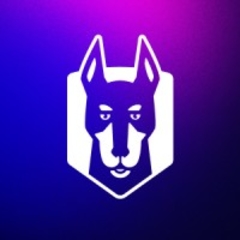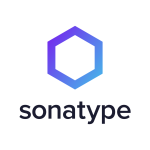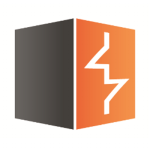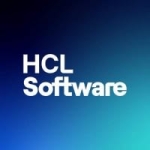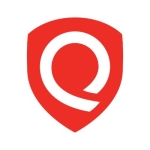What is our primary use case?
We are using Snyk for two main reasons:
- Licensing. For every open source package that we're using, we have licensing attributions and requirements. We are using Snyk to track all of that and make sure we're using the licenses for different open source packages that we have in a compliant fashion. This is just to make sure the licensed user is correct.
- Vulnerabilities. Snyk will report on all the vulnerabilities present in all our different packages. This is also something we'll use to change a package, ask the desk to fix the vulnerability, or even just block a release if they are trying to publish code with too many vulnerabilities.
I am using the latest SaaS version.
How has it helped my organization?
Our whole process of deploying code uses Snyk either as a gateway or just to report on different build entities.
The solution's ability to help developers find and fix vulnerabilities quickly is a great help, depending on how you implement it at your company. The more you empower your developers to fix their stuff, the less policies you will have to implement. It's a really nice feeling and just a paradigm shift. In our company, we had to create the habit of being proactive and fixing your own stuff. Once the solution starts going, it eases a lot of management on the security team side.
Snyk's actionable advice about container vulnerabilities is good. For the Container tool, they'll provide a recommendation about what you can do to fix your Docker, such as change to a slimmer version of the base image. A lot of stuff is coming out for this tool. It's good and getting better.
The solution’s Container security feature allows developers to own security for the applications and the containers they run in in the cloud. That is its aim. Since we are letting the developers do all these things, they are owning the security more. As long as the habit is there to keep your stuff up-to-date, Snyk won't have any effect on productivity. However, it will have a lot of effect on security team management. We put some guardrails on what cannot be deployed. After that, we don't have to check as much as we used to because the team will just update their stuff and try to aim for lower severities.
Our overall security has improved. We are running fewer severities and vulnerabilities in our packages. We fixed a lot of the vulnerabilities that we didn't know were there. Some of them were however hard to exploit, mitigating the risks for us, e.g., being on a firewalled server or unreachable application code. Though I don't recall finding something where we said, "This is really bad. We need to fix it ASAP."
What is most valuable?
I find many of the features valuable:
- The capacity for your DevOps workers to easily see the vulnerabilities which are impacting the code that they are writing. This is a big plus.
- It has a lot of integration that you can use even from an IDE perspective and up to the deployment. It's nice to get a snapshot of what's wrong with the build, more than it is just broken and you don't know why.
- It has a few nice features for us to manage the tool, e.g., it can be integrated. There are some nice integrations with containers. It was just announced that they have a partnership with Docker, and this is also nice.
The baseline features like this are nice.
It is easy to use as a developer. There are integrations that will directly scan your code from your IDE. You can also use a CLI. I can just write one command, then it will just scan your old project and tell you where you have problems. We also managed to integrate it into our build pipeline so it can easily be integrated using the CLI or API directly, if you have some more custom use cases. The modularity of it is really easy to use.
Their API is well-documented. It's not too bad to integrate and for creating some custom use cases. It is getting extended going forward, so it's getting easier to use. If we have issues, we can contact them and they'll see if they can change some stuff around. It is doing well.
Most of the solution's vulnerability database is really accurate and up-to-date. It has a large database. We do have some missing licenses issues, especially with non-SPDX compliant one, but we expect this to be fixed soon. However, on the development side, I rarely have had any issues with it. It's pretty granular and you can see each package that you're using along with specific versions. They also provide some nice upgrade paths. If you want to fix some vulnerabilities, they can provide a minor or major patch where you can fix a few of them.
What needs improvement?
• More visibility on the package lifecycle because we are scanning our application at different point (DevOps, Security, QA, Pipeline, Production Env) and all those steps get mixed together in the UI. Therefore, it's hard to see the lifecycle of your package.
• Docker base image support was missing (Distroless) but support is increasing.
• UI taking some time to load. We have a lot of projects in the tool.
Snyk is responsive and they work to fix the pain points we have.
For how long have I used the solution?
What do I think about the stability of the solution?
The stability is good. I don't recall ever having issues with the application being unreachable or down.
What do I think about the scalability of the solution?
Scalability has some issues because we have a lot of code and its use is mandatory. Therefore, it can be slow at times, especially because there are a lot of projects and reporting. Some UI improvements could help with this.
From a scan time perspective, everything is pretty fast.
All our developers and the security team use it. There are probably around 100 people using it whose roles are mainly developers, along with a few security analysts and architects.
How are customer service and technical support?
We have good communication with Snyk. They make us feel like a valued customer and provide us with a Customer Success Manager and training for our teams.
I haven't contacted technical support. One of my teammates did contact them and was pleased with the results.
Which solution did I use previously and why did I switch?
We were previously using another vendor for vulnerability management. We decided to use Snyk in parallel to handle licence reporting. One issue that we had with our previous vendor was that we were promised features that were never delivered. It also had some quirks that weren't fitting our needs. Since we already had Snyk, and it could do vulnerability reporting, we decided to keep Snyk for the two use cases.
How was the initial setup?
I wasn't part of the initial setup. It was done by another team. From what I heard, it wasn't too much of a hassle to set up. Though, my team hasn't been 100 percent satisfied with how it was set up by us, as we could do so much more with the tool..
What was our ROI?
We have seen ROI from a security perspective.
The solution has reduced the amount of time it takes to find and fix problems, especially to fix them. Without Snyk, we had no visibility on open source package vulnerabilities. We started from not seeing anything to fixing them. Since we had to wait for an incident or fortuitous discovery before, it has been a good improvement.
What other advice do I have?
At first, we were using it only for scanning the images that were getting sent to production. Then, we added the entire workload running on our clusters. This increased our vulnerabilities because there were duplicates, but also gave more visibility.
The more you put into learning the tool, the better results you will get. Even if it's easy to use, you do need to create the habit of using it with your DevOps. Once it's integrated, it will be a lot easier. You'll see quickly the issues that you can fix when you're writing your code and don't have to wait until the end of QA to be denied.
I don't see anything Snyk can report as a false positive because the vulnerability database is there and the vulnerable code in the package. It just depends on how you invoke the code. Unless they start scanning the code, they cannot know. From that perspective, false positives are pretty low, almost non-existent.
Our developers are spending more time working on Snyk issues than before, mainly because they were not aware of things that they needed to fix. The process is easy to fix something, so it neither increases nor decreases our developer productivity.
It does require a bit of time, especially when creating the habit of using the tool, but the investment is worth it. It enables developers to own security. If you can get the developers to own security, you are reducing a lot of weight off of your security team. Then, you don't need to have such a big security team because the solution offloads a lot of work.
Get the developers on your side. We managed to make it mandatory, but this won't happen everywhere. If a developer takes a solution to heart in a project and really wants to use it, it'll go well. Otherwise, if you keep fighting against them, then it will be a hassle.
If Snyk offered a SAST/DAST solution, we would be interested in testing it out. We have good experience with the platform and we could consolidate our efforts with them. We are not super satisfied with our current SAST implementation.
What I want for the future is to get more proactive adoption instead of adopting because it is mandatory. Adoption will grow, especially if Snyk have other features coming in. We enjoy the product.
I would rate the solution as a 9 (out of 10).
Which deployment model are you using for this solution?
Public Cloud
If public cloud, private cloud, or hybrid cloud, which cloud provider do you use?
Other
Disclosure: PeerSpot contacted the reviewer to collect the review and to validate authenticity. The reviewer was referred by the vendor, but the review is not subject to editing or approval by the vendor.

